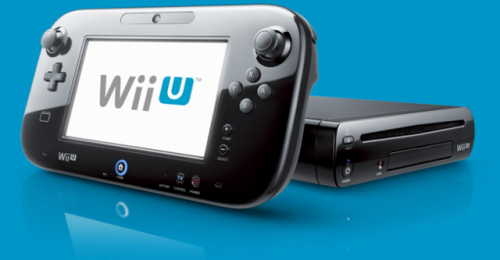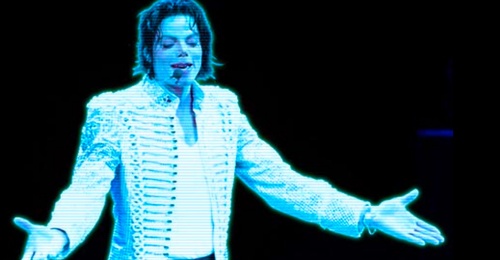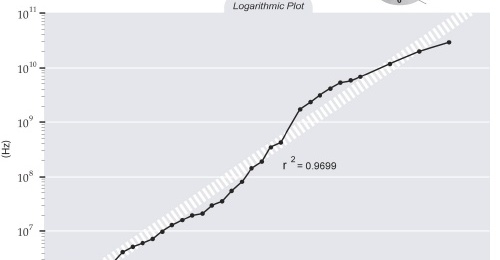


Framtidstrender Ekonomi
China's Economy Will Overtake The U.S
ÅR 2018

Framtidstrender Ekonomi
Poverty eradicated
År - 2035
Tidslinje år 2000-2050
Jag är en textsektion. Välj redigera-knappen för att ändra denna text. Lorem ipsum dolor sit amet, consectetur adipiscing elit. Ut elit tellus, luctus nec ullamcorper. gyg ygug yu
THE DOT-COM BUBBLE BURSTS (Technology)
10 March, 2000

The dot-com bubble was a speculative bubble covering roughly 1998–2000, during which stock markets... Read more


Wikipedia is launched
15 January, 2001

Wikipedia is a free, web-based, collaborative, multilingual encyclopedia project. Launched on the 15th January 2001, it went on to become the largest and by far the most popular general reference work on the Internet. By 2011, more than 18 million articles (3.7 million in English) had been written by volunteers from around the world. Tags: Technology Read more

Apple launches the iPod
10 November, 2001

iPod was a new line of portable media players designed and marketed by Apple. The first generation was launched on 10th November 2001. With its user-friendly interface and gigabytes of storage capacity, the iPod went on to become phenomenally successful. The introduction of the iTunes store, with millions of songs available to download, substantially boosted Apple's fortunes. Read more

The world's first cyborg
15 March, 2002

In 2002, cybernetics professor Kevin Warwick at the University of Reading, UK, achieved a major breakthrough in the field of brain-computer interfaces. The landmark project consisted of two experiments, both carried out by Professor Warwick himself. Read more

MySpace is launched
17 July, 2003

MySpace was launched in this year and quickly became one of the most popular social networking sites on the web. In 2006, the 100 millionth account was created. However, it was overtaken by its main competitor - Facebook - during April 2008, based on monthly unique visitors. Read more

The emergence of Web 2.0
1 February, 2004

This year onwards saw the emergence of Web 2.0 - the next incarnation of the Internet. Up until recently, it had been primarily a tool used to publish material for public consumption. This could be defined as Web 1.0 and was simply a one-way street. Read more

Facebook is launched
15 July, 2004

Launched in 2004, Facebook later became the most popular social networking site on the web – overtaking its main competitor, MySpace, in April 2008. It also became the most popular site for uploading photos, with 14 million uploaded daily. By 2010, it had over 350 million members – or about one-fifth of all users on the Internet. Read more

The world's first 1 gigabyte SD card
15 August, 2004

In 2004, SanDisk released the first SD (Secure Digital) card with a capacity of 1 gigabyte. Costing around $500, this was enough to store 300 MP3 music files, or 2,000 images taken at 1,600 x 1,200-pixel resolution, or around nine hours of MPEG4 video. SD card capacities continued to increase exponentially – doubling each year whilst declining rapidly in cost. By 2011, they were available at 128GB. Read more

YouTube is launched
7 February, 2005

The video-sharing website, YouTube, was launched in February 2005. It grew rapidly, reaching 100m views per day within a year of being launched. By 2007, the site consumed as much bandwidth as the entire Internet in 2000 - and in March 2008, its bandwidth costs were estimated at approximately $1 million a day. By 2009, the site had reached over a billion views daily, becoming the 4th most popular website after Google, Yahoo! and Facebook. Read more

USB flash drives replace floppy disks
15 May, 2005

By the middle of this decade, flash drives featuring the Universal Serial Bus (USB) interface had superseded the previously standard floppy disks. The latter had been in use since the mid-1970s, but now, along with CD-ROMs, were experiencing massive drops in commercial use - essentially becoming obsolete. Read more

Twitter is launched
15 August, 2006

Twitter was founded in 2006. This new method of social networking and micro-blogging grew rapidly in popularity. Within a few years, it was comparable with Facebook in terms of prominence. Numerous celebrities were using it to keep in touch with fans, while news outlets and businesses used it to supply updates to their followers. By 2011, Twitter had over 200 million users, was generating 190 million "tweets" a day and handling 1.6 billion search queries. Read more

Apple debuts the iPhone
1 June, 2007

Released in June 2007, the iPhone is a multimedia-enabled smartphone designed and marketed by Apple. It functions as a camera phone (also including text messaging and visual voicemail), a portable media player (equivalent to a video iPod), and Internet client (with e-mail, web browsing, and Wi-Fi connectivity), using a multi-touch screen to provide a virtual keyboard in lieu of a physical keyboard. Time magazine named it the Invention of the Year. Read more

Amazon releases the Kindle
18 September, 2007

The Kindle is a software and hardware platform developed by Amazon subsidiary Lab126, for rendering and displaying e-books and other digital media. The device uses an electronic paper display and is able to download books and other digital content from Amazon, without a computer and without any monthly fee. Read more

Google Street View is launched
8 October, 2007

Google Street View is a technology featured in Google Maps and Google Earth that provides panoramic views from various positions along many streets in the world. It was originally launched only in several US cities, but gradually expanded to include many more cities and rural areas worldwide. Read more

Breakthrough in wireless energy transfer
15 August, 2008

Intel Corporation demonstrates wireless electricity sent to a lightbulb at 75% efficiency.* This technology still faces a number of problems,* but will eventually see large-scale adoption. One of the main benefits will be reduced clutter in homes and offices, since the need for power cords will be eliminated. Read more

Major advances in CGI
15 September, 2008

New modelling technology, pioneered by California-based company Image Metrics, now enables the most minute details of a facial expression to be captured and recreated. This means a long-standing barrier known as the 'uncanny valley' - the perception that animation looks less realistic as it approaches human likeness - may soon be crossed. Read more

Scientists extract images directly from the brain
14 December, 2008

In a major scientific breakthrough, a Japanese company developed a way of analysing electrical signals sent from the visual cortex and converting them to digital images on screen. Read more

Video adverts on London's tube
31 December, 2008

Video screen adverts - including web content displayed in real time - are appearing on the London Underground.* They are limited to the busiest stations initially, but will soon spread to the entire network. Various other cities are beginning to adopt this technology too. Read more

A shift towards portable (and ultra-portable) PCs
7 January, 2009

The market is moving toward portable PCs even faster than expected. By 2009, the laptop share of PCs bought worldwide has overtaken desktops for the first time.* In addition, a new generation of "ultra portables" is emerging. These are significantly cheaper and more compact than traditional laptops, but offer many of the same features including wireless Internet access. Read more

3D scanning enters the consumer market
15 June, 2009

This form of technology has been available for a while now - mainly for use in design visualization, CAD/prototyping, architecture, engineering, film production, healthcare, etc. Read more

Mind control headsets for video gaming
12 September, 2009

In 2009, a company called Emotiv released a headset allowing gamers to control games from brain waves alone.* This was achieved in a completely non-intrusive manner: no crude implants or direct physical contact were needed. Sensors on the headset could detect the neuroelectrical patterns in the wearer's head, and these were converted into actions on screen. Read more

Apple debuts the iPad
3 April, 2010

The iPad is Apple's first tablet computer – a device category between a smartphone and laptop computer. Similar in functionality to a larger and more powerful iPhone or iPod touch, it runs a modified version of the same operating system (iPhone OS). Its included applications are also redesigned to take advantage of the larger screen with added functionality similar to their Mac OS X counterparts. Read more

Major breakthrough in robotics
10 April, 2010

Robotic manipulation of non-rigid objects – where configuration is unknown beforehand – is now possible. A robot developed at the University of California is capable of analysing towels "on the fly", rather than being given a fixed set of movements. It can analyse different shapes, colours and materials using a pair of high-resolution cameras, then fold and arrange them into neat piles.* Read more

Speech-to-speech translation is common in mobile phones
15 June, 2010

Large-vocabulary, continuous, speaker-independent speech recognition is now widespread on cellphones. It has become a popular (and free) iPhone app, as well as being available on Symbian phones and on the Nexus One, using Google's voice translation server. Read more

Augmented Reality (AR) is entering the mainstream
15 August, 2010

A growing number of cellphones, cameras and other digital devices now feature augmented reality. This technology displays 3D virtual elements on a real-world camera view. GPS units in combination with inertial references can map a user's precise location, then relay graphics from the web (or a web-based application such as Google Earth) and superimpose them on-screen. Read more

14 nanometre chips enter mass production
15 May, 2011

The next generation of microprocessor technology is released by Intel, with transistors now based on a 14nm manufacturing process.* For comparison, a carbon atom is 0.34nm wide.* The 4GHz barrier in stock CPU is finally being passed, thanks to the performance and energy efficiency of these new chips. Read more

The first open petaflop supercomputer comes online
15 May, 2011

"Blue Waters", the first open scientific research supercomputer to sustain one petaflop performance (a quadrillion calculations per second), comes online at the University of Illinois at Urbana-Champaign.* Read more

22 nanometre chips enter mass production
15 May, 2011

Intel begins production of a new 22nm microprocessor - code-named Ivy Bridge - the first high-volume chip to use 3D transistors. A nanometre is one-billionth of a metre. The successor to 32nm, these will continue the trend of Moore's Law for years to come. Read more

USB 3.0 is widely available
15 June, 2011

USB 3.0 is the third major revision of the Universal Serial Bus (USB) standard for computer connectivity. It has transmission speeds of 5 Gbit/s, which is 10 times faster than USB 2.0 (480 Mbit/s). USB 3.0 significantly reduces the time required for data transmission, reduces power consumption, and is downward compatible with USB 2.0. Read more

Consumer-level robotics are booming
18 July, 2011

Thanks to falling costs, this decade sees the beginning of robots entering mainstream society. From 2008 to 2011, sales of professional and personal service robots more than double - from 5.5 million to over 11.5 million.* Read more

Multi-touch surface computing enters the consumer market
15 August, 2011

These coffee table-sized devices have been appearing in business venues for a couple of years already. They are now becoming cheap enough for the consumer market. Read more

Nintendo launches the Wii U
15 July, 2012

The Wii U is the first of the 8th generation games consoles – the others being the Xbox One and PlayStation 4, which are launched in 2013. The Wii U features gameplay in full 1080p resolution, 8GB of flash-based memory for storing game saves, a touch tablet controller with built-in camera, and game discs with 25GB of content using a Nintendo-proprietary format based on that of Blu-ray Discs. It is backward compatible with Wii software.* Read more

Quad-core smartphones and tablets
24 November, 2012

The first quad-core smartphones and tablets were released in 2012, offering a major boost in processing power. This new generation includes the Samsung Galaxy S3, HTC Edge, HTC Zeta, HTC Quattro tablet and the Asus Transformer Prime.** Read more

Highly flexible touch sensors are appearing in a range of gadgets
18 April, 2013

Highly flexible, film-based touch sensors are entering the smartphone and tablet markets.* They are also extending touch capabilities into a range of new consumer and industrial products. Using roll-to-roll metal mesh technology, they provide a high-performance alternative to existing touch sensors. Larger, lighter, sleeker, curved and edgeless designs can now be developed for handheld devices. Read more

Launch of the PS4 and Xbox One
14 November, 2013

2012 saw the launch of Nintendo's Wii U – the first of the eighth generation games consoles.* By late 2013, it is joined by the PS4 and Xbox One.* These new machines offer major improvements in graphical power. Both have eight-core CPUs, each clocked at 1.6GHz and based on the 28nm fabrication standard. Read more

Terabyte SD cards are available
20 March, 2014

SD cards and other memory devices continue to grow exponentially this decade, with storage capacities doubling roughly every year. A terabyte is equal to 1000 gigabytes. Read more

Google Glass is launched to the public
14 May, 2014

Google Glass is an augmented reality head-mounted display, allowing hands-free access to the web.* The product resembles normal eyeglasses where the lens is replaced by a small electronic screen. It provides interaction via natural language voice commands, as well as eye-tracking technology.* Read more

Most phone calls are made via the Internet now
15 August, 2014

By now, the majority of homes and workplaces use Voice over Internet Protocol (VoIP) systems, such as Skype.* These connections are made via the Internet, rather than traditional phone lines. Read more

The Internet has a greater reach than television
15 August, 2014

Citizens in developed nations now rely on the Internet more than any other medium for news coverage. This trend* first became apparent in the early 2000s, when radio was overtaken by Internet usage. The rapid shift towards web-based information then began to affect print media, with newspaper sales being heavily impacted. Read more

Battery technology gets a boost
8 February, 2015

A new method of charging lithium-ion batteries has been perfected. This enables them to charge ten times faster and to last ten times as long. A chemical oxidation process creates miniscule holes (10 to 20 nanometres) between layers of graphene. Read more

The next generation of optical discs
18 March, 2015

This year sees the release of a new optical disc format with 300GB capacity.* It has been jointly developed by Sony and Panasonic. Read more

3D printing is a mainstream consumer product
23 March, 2015

Until recently, this technology was extremely expensive - upwards of $15,000 per machine - and limited to use in industrial prototyping, product design, medical modeling and architectural models.* However, plummeting costs are now making it affordable to consumers.** Read more

Virtual reality makes a comeback
15 May, 2015

The computer industry is another sector that continues to see growth, in spite of the global economic crisis.* Exponential improvements in processing power (doubling every 18 months) are enabling the creation of highly lifelike graphics and 3D environments. Read more

Trucks with emergency braking systems are mandatory in Europe
4 July, 2015

In November 2015, an EU law comes into effect which mandates that all new trucks must be fitted with emergency braking and collision warning systems.* This has been introduced in an effort to lower the number of rear-end collisions, which account for a significant proportion of road accidents. Read more

The deadline for the Millennium Development Goals
31 December, 2015

In 2000, the largest gathering of world leaders in history took place, as the 193 UN member states met in New York to discuss the Millennium Development Goals (MDGs). These were eight international objectives with ambitious targets for developing countries, most of them to be achieved by 2015.* Read more

Holographic Versatile Disc (HVD) supersedes Blu-Ray
21 February, 2016

These ultra-high density discs are capable of holding 1Tb of data - equivalent to over 200 DVDs. They work by analysing micro-holograms in 3D, rather than just markings on the surface. This allows data to be far more densely packed than conventional optical technology. Read more

Microchipping of all dogs in England
3 April, 2016

In April 2016, a new law comes into effect requiring all dogs in England to be tagged with a microchip implant.* This measure has been introduced in order to cut the growing number of strays. As of 2012, there were 118,932 dogs reported lost or stolen, of which 55,898 (about 47%) were reunited with their owner. Read more

China passes the USA in PPP
16 April, 2016

Under Purchasing Power Parity (PPP), China's economy expanded from $11.2 trillion in 2011 to $19 trillion in 2016. Meanwhile, the size of the US economy rose from $15.2 trillion to $18.8 trillion. This has reduced America's share of world output to 17.7%, its lowest in modern times. China's share has reached 18% and is continuing to rise.* Read more

The mining industry is highly automated
15 October, 2016

Recent years have seen a rapid increase in the use of automation, a trend that is becoming especially prevalent in the mining sector. Rio Tinto, for example, now has a fleet of self-driving haul trucks which together are responsible for over half of its total material moved.** Read more

Agricultural robots are appearing on farms
30 October, 2016

The first significant numbers of robots are appearing on farms.* These have been in development for 20 years and are now cheap and sophisticated enough for mainstream use. New scanning and imaging technology has solved the primary problem of allowing robots to handle the varying shape of individual fruits and vegetables. Read more

OLED displays are in widespread use
26 November, 2016

Having fallen greatly in cost, organic light-emitting diodes (OLED) are now available in a wide range of devices. These use less power than traditional LCDs whilst allowing sharper, thinner, brighter displays. Read more

Electronic paper is seeing widespread use
25 September, 2017

This technology has been in development for over a decade* and is now seeing widespread use.* It works by combining organic, thin film transistors (TFT) with organic, electroluminescent displays. This produces flexible, paper-thin devices barely 0.3mm in thickness. Read more

Wireless, implantable devices that monitor a range of health conditions in real time
22 December, 2017

After several years of testing and development, a miniature device is now available* that can monitor a range of substances in the blood, providing instant results via mobile phone. Read more

Robot insect spies are in military use
31 August, 2018

These "micro aerial vehicles", no larger than a common house fly, have been in development for over a decade.* One of the major hurdles was creating sufficient battery power in such a small object, as well as keeping them light enough to remain airborne. Read more

Ubiquitous internet nodes connect appliances, vehicles, etc.
18 September, 2018

In developed nations, many of the day-to-day routines in the home are becoming automated. Fridges, for instance, can be programmed to order new food before they become empty.* Read more

Consumer devices with 100 Gbit/s transfer speeds
30 September, 2018

A new form of data transfer is now available for the consumer market. This is known as "Thunderbolt" and is replacing the Universal Serial Bus (USB) leads which have been the standard for many years. Read more

Computers break the exaflop barrier
4 August, 2019

An exaflop is 1,000,000,000,000,000,000 (a million trillion, or a quintillion) calculations per second. The world's top supercomputers are now reaching this speed, which is a thousandfold improvement over those of a decade earlier.* Read more

Bionic eyes with high resolution are commercially available
1 September, 2019

Following years of trials, high resolution bionic eyes are becoming available for persons with degenerative vision loss. Read more

Connected vehicle technology is being deployed in a number of countries
15 September, 2019

Many of the world's cars are already linked to the Internet in some way.* By 2019, another layer of technology is being added in the form of wireless connections between vehicles.* Read more

Automated freight transport
13 October, 2019

Autonomous rapid transit has already been in place at certain airports and on city metro systems. By 2019, it has begun spreading to public roads, with significant numbers of driverless trucks appearing.* Read more

US copyright begins to expire, starting with all works from 1923
10 November, 2019

Up until 1998, US copyright law stood with all works published before 1923 in the public domain, all works between 1923 and 1977 holding a copyright for 75 years (assuming a renewal was made) and works published after 1977 holding a copyright dependent on the author's date of death. Read more

Internet use reaches 5 billion worldwide
29 February, 2020

The number of Internet users has now reached almost 5 billion, equivalent to the entire world population in 1987. This compares with 1.7 billion users in 2010 and only 360 million in 2000.* Read more

The 5G standard is released
11 March, 2020

By 2020, the next major cellular wireless standard has been adopted.* This continues the trend seen since 1981 in which a new mobile generation has appeared roughly every 10th year. Read more

Texting by thinking
10 April, 2020

In addition to 5G, phones are becoming available with the option of texting by thought power alone.* This is achieved by a sensor-mounted headset worn by the user. Read more

Video games with truly lifelike CGI
22 May, 2020

Thanks to exponential growth in computing power, video game characters now achieve a truly lifelike appearance when played with the latest graphics cards. Advances in 3D modelling techniques have allowed programmers to recreate the subtlest of facial features, expressions, movements, lighting and other physical effects. Read more

Holographic TV is going mainstream
17 September, 2020

Breakthroughs in rewritable and erasable systems have made it possible to mass-market the first truly holographic TV displays.* This form of technology has been in development for nearly three decades. Read more

Smart meters in every UK home
30 November, 2020

Smart meters are now installed in every UK home. These have an electronic display, showing customers precisely how much electricity and gas they are using, and their costs in real time. Read more

30,000 drones are patrolling the skies of America
26 December, 2020

In 2012, the FAA Reauthorization Act passed into law in America. This legislation was the result of a huge push by lawmakers and defence companies to massively expand the use of drones – making it far easier for federal, state, local police and other agencies to fly them in U.S. airspace. Read more

The world's first artificial kidney
29 June, 2021

Kidneys perform a vital role in the human body: filtering blood, removing excess fluid and eliminating waste products. They are essential to the urinary system, the regulation of blood pressure (via salt and water balance) and the production of various hormones. Read more

Mind-reading technology is being deployed for security purposes
21 July, 2021

Twenty years on from 9/11, mind readers are now a common feature of airport security, as well as sports stadiums and other high profile events. Read more

Wireless electricity is reaching critical mass
3 November, 2021

Most of the latest electric/electronic devices now have antennas in place of batteries, drawing power from a single node mounted in the ceiling of a room. Read more

Traditional microchips are reaching the limits of miniaturisation
29 November, 2021

Semiconductor companies are reaching the limits of miniaturisation for computer chips. The smallest transistors are now being built with a 4-nanometre manufacturing process. Read more

Brain implants to restore lost memories
9 June, 2023

By now, it's becoming possible to replicate small areas of the brain with "neural prostheses" in order to repair damage from Alzheimer's, stroke or injury. Read more

Petabyte storage devices are available
27 August, 2024

Data storage devices are continuing to grow exponentially, with capacities doubling every year. Nanotechnology is enabling truly vast quantities of information to be stored. A petabyte is 1000 terabytes, or one million gigabytes. Secure digital and microSD cards have disappeared by now, replaced by an even smaller form-factor. Read more

Human brain simulations are becoming possible
16 September, 2025

The exponential growth of computer processing power has made it possible to form accurate models of every part of the human brain.** Read more

Medical nanobots are being developed
30 September, 2025

Nano-scale robots - orders of magnitude smaller than earlier micro-sized versions - are being developed as part of efforts to improve healthcare. In some countries they have reached the human trial stage and will soon be approved by government. Read more

Robotic hands matching human capabilities
7 September, 2026

As part of the on-going rise of consumer-level robotics, recent research in artificial intelligence and bio-inspired devices has reached a new plateau of possibilities. Read more

Printed electronics are ubiquitous
15 April, 2028

The printed electronics market has seen exponential growth. By now, it has ballooned to over $300 billion globally.* Read more

Human-like AI is becoming a reality
10 February, 2029

A major milestone is reached in the field of AI this year as a computer passes the Turing Test for the first time.** Read more

Heavy automation of supermarkets and retail environments
27 March, 2029

In developed nations, the majority of retail environments are now cashless. Automated systems have made it possible for customers to shop with little or no physical interaction with a checkout. Read more

Intelligent advertising
21 May, 2029

Personalised adverts - similar in style to those seen in the film Minority Report - are becoming widespread by the end of this decade.** Read more

Smart Grid Technology
19 March, 2030

In prior decades, the disruptive effects of crude oil shocks,* alongside ever-increasing demands of a growing and industrialising population, were putting enormous strain on the world's power grids. Read more

AI is widespread
9 June, 2030

Despite the recent economic disruption, technology is continuing to accelerate exponentially. By 2030, the pace of change is so great that it seems as if an entire century of progress has already occurred in the first three decades of the 21st century.* Read more

Hyper-fast crime scene analysis
5 December, 2030

Crime scene analysis and forensic science have become extraordinarily rapid and sophisticated, thanks to the convergence of a bewildering array of technologies. Read more

Web 4.0 is transforming the Internet landscape
29 June, 2031

Further convergence of the online and physical worlds has led to the emergence of "Web 4.0" – the next generation of internet. Read more

Terabit internet speeds are commonplace
3 November, 2032

In addition to the benefits resulting from Web 4.0 (described earlier), connection speeds have also vastly improved. Read more

Holographic wall screens
8 July, 2033

Conference halls, movie theatres, stadiums and other such environments are now utilising holographic wall screens. Read more

Exabyte storage devices are available
13 August, 2034

Data storage devices are now available with capacities of more than one exabyte (a million terabytes). This might seem excessive to observers from earlier decades. Read more

Self-driving vehicles are widespread
12 May, 2035

In many developed countries, a new generation of self-driving vehicles is emerging. These use a combination of advanced GPS, AI and lane-changing technology to carry passengers to their destination automatically. Read more

Holographic recreations of dead people
19 July, 2035

Throughout this time many dead celebrities, presidents and historical figures from the past are "resurrected" online, via the immense AI and supercomputing powers now available. Read more

Bionic eyes surpassing human vision
10 July, 2036

Although yet to become mainstream, bionic eye implants are now available that not only restore sight, but actually exceed human vision. Read more

Quantum computers are widely available
28 April, 2037

Most government agencies, universities and research institutes now have access to this revolutionary technology, which offers spectacular computing speed and power on a completely different scale to anything used before. Read more

Older computers are at risk of experiencing major software malfunctions
6 February, 2038

The Year 2038 problem (also known as "Y2K38" by analogy to the Y2K Millennium bug) gains considerable public and media attention this year. Read more

Full immersion virtual reality
15 January, 2039

Computers are now sufficiently advanced and miniaturised that billions of them can be implanted within the brain. Advances in neuroscience, in parallel with these and other developments, have led to a new form of simulation known as full immersion virtual reality. Read more

Virtual telepathy is dominating personal communications
13 August, 2040

The first generation of brain-computer interfaces reached the consumer market in around 2010. This technology was crude and limited to begin with: more of a novelty than a serious application. Read more

Claytronics are revolutionising consumer products
9 September, 2040

Claytronics, also known as programmable matter, are now embedded in countless everyday items. This technology involves the manipulation of tiny devices known as catoms (claytronic atoms). Read more

Humans are becoming intimately merged with machines
28 February, 2045

In some fields, the pace of technology has become so fast that humans can no longer comprehend it without augmenting their own intelligence. Read more

Reversible biostasis is available
30 July, 2048

Nanotechnology has continued to progress exponentially, transforming society in ways that were only recently considered science fiction.** Read more

Robots are a common feature of homes and workplaces
25 January, 2049

Robots are now widspread in mainstream society, appearing in a wide variety of forms and functions.* Androids are especially popular among the elderly, widowed and those who are disabled or incapacitated – in which role they serve as companions, guides and carers. Read more

Tidslinje år 2000-2050
Jag är en textsektion. Välj redigera-knappen för att ändra denna text. Lorem ipsum dolor sit amet, consectetur adipiscing elit. Ut elit tellus, luctus nec ullamcorper. gyg ygug yu
[ph_timeline id="1" width="5000" height="500"]
